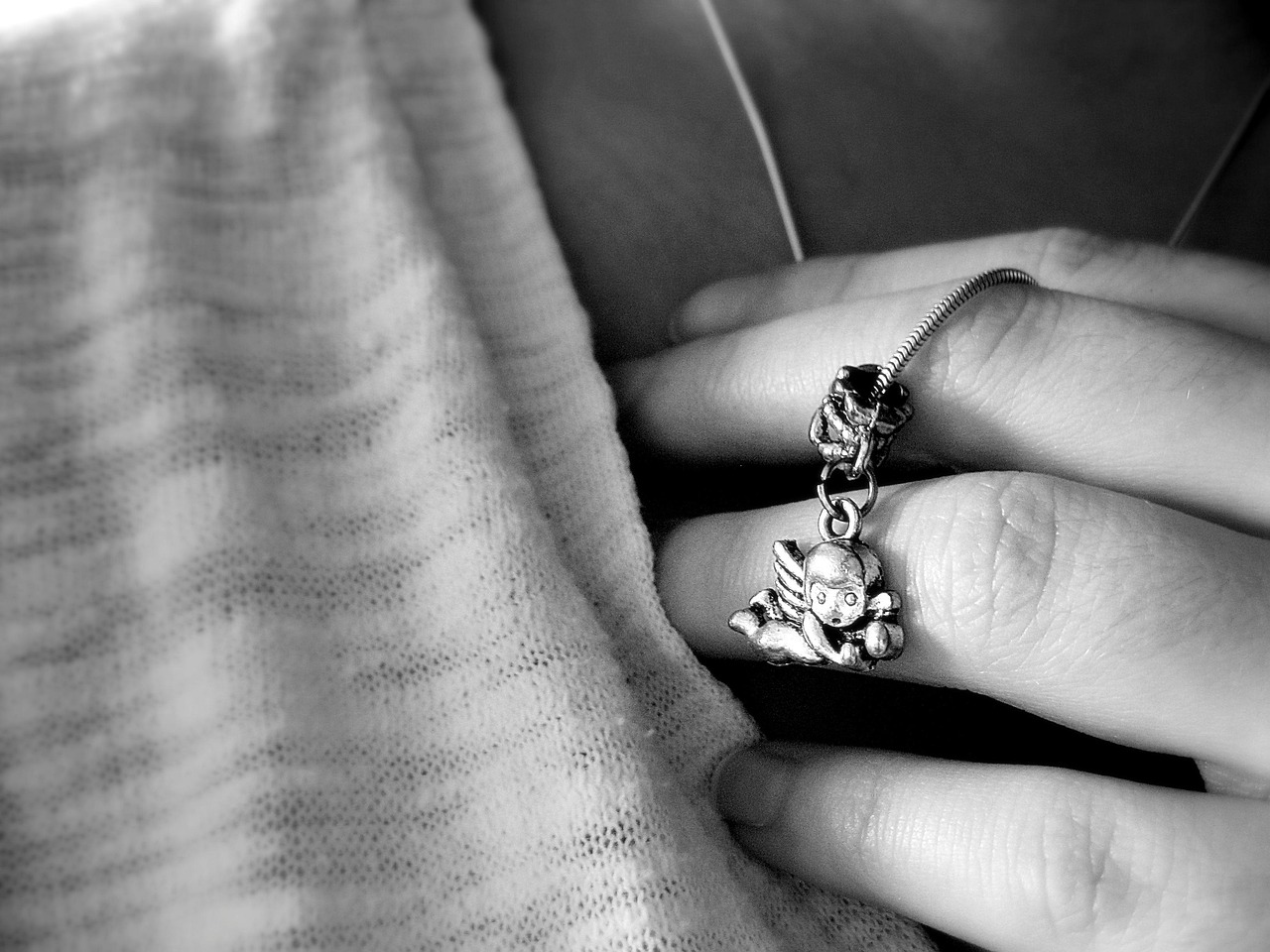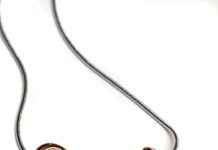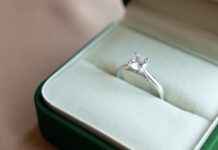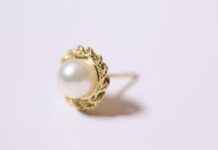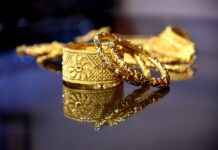This article delves into the significance, symbolism, and cultural relevance of religious and spiritual pendants, shedding light on their historical roots and contemporary usage across various belief systems. Pendants have transcended their decorative purpose to become profound symbols of faith, protection, and personal growth.
The Historical Significance of Pendants
Pendants have a rich history, worn by individuals for centuries as tokens of faith or spiritual connection. Their origins can be traced back to ancient civilizations where they were believed to provide protection or blessings from deities. Over time, the designs and materials have evolved, reflecting the cultural and religious contexts of the times.
Types of Religious Pendants
- Christian Pendants: These often feature symbols such as the cross or ichthys, which express deep faith and devotion.
- Islamic Pendants: Common symbols include the crescent moon and star, which hold significant meaning in Islamic culture.
- Hindu Pendants: Symbols like the Om or lotus flower represent spiritual knowledge and enlightenment.
Spiritual Pendants and Their Meanings
Spiritual pendants are often linked to metaphysical beliefs, serving as tools for personal growth and healing. For instance, chakra pendants are designed to align energy centers in the body, while crystal pendants are believed to harness unique healing properties.
Choosing the Right Pendant for You
Selecting a pendant is a deeply personal journey. Consider your beliefs, intentions, and the energies you wish to attract. This choice can enhance your spiritual practice and personal connection to the pendant.
The Role of Pendants in Modern Spirituality
In today’s spiritual landscape, pendants act as personal talismans, connecting individuals to their spiritual paths. They serve as reminders of one’s beliefs and intentions in daily life.
Care and Maintenance of Pendants
To ensure that your pendants retain their beauty and significance, proper care is essential. Regular cleaning and mindful handling can prolong their life and vibrancy.
Conclusion: The Lasting Impact of Pendants
Pendants hold profound meanings across cultures and religions, serving as symbols of faith, protection, and personal growth. By exploring the personal significance of your own pendant, you can deepen your spiritual journey and connection to your beliefs.
<h2[The Historical Significance of Pendants]
Pendants have a rich history that spans across various cultures and religions, serving not only as decorative items but also as profound symbols of faith, protection, and identity. Their origins can be traced back to ancient civilizations, where they were often used as amulets or talismans believed to provide safety and spiritual guidance.
In ancient Egypt, for instance, pendants were frequently crafted in the shape of sacred symbols, such as the ankh or the scarab, and were worn by both the living and the deceased to ensure protection in the afterlife. Similarly, in ancient Greece, pendants were adorned with images of gods and goddesses, serving as tokens of devotion and a means to invoke divine favor.
As time progressed, the significance of pendants evolved. In the Christian tradition, pendants featuring the cross became prominent, symbolizing the sacrifice of Jesus Christ and serving as a reminder of faith and redemption. These pendants were not only personal expressions of belief but also items of communal identity.
In Islamic culture, pendants often showcase intricate calligraphy or symbols like the crescent moon, reflecting a deep connection to spirituality and the teachings of the Quran. These items serve as daily reminders of one’s faith and commitment to their beliefs.
Across different cultures, the evolution of pendants highlights their enduring appeal and significance. They have transcended mere ornamentation to become powerful symbols of personal and collective identity, embodying the values and beliefs of those who wear them.
In conclusion, the historical significance of pendants is a testament to their role in human culture. They continue to be cherished not just for their aesthetic appeal, but for the deep meanings they carry across various religions and cultures.
<h2[Types of Religious Pendants]
The Significance of Religious Pendants is profound, as they serve as tangible representations of faith and belief systems. This section delves into the various types of religious pendants, categorizing them by their respective religions and exploring their unique meanings and purposes.
| Religion | Pendant Type | Meaning |
|---|---|---|
| Christianity | Cross | The symbol of Jesus Christ’s sacrifice and salvation. |
| Islam | Crescent Moon and Star | Represents Islamic faith and guidance. |
| Judaism | Star of David | Symbolizes Jewish identity and heritage. |
| Buddhism | Dharma Wheel | Represents the teachings of Buddha and the path to enlightenment. |
| Hinduism | Om Symbol | Represents the essence of the ultimate reality and consciousness. |
Each type of pendant carries its own unique symbolism and purpose, reflecting the beliefs of the wearer. For instance, Christian pendants often feature the cross, which is a powerful symbol of faith and redemption. In contrast, Islamic pendants may showcase the crescent moon and star, signifying guidance and devotion to Allah.
- Christian Pendants: Often used to express faith and devotion.
- Islamic Pendants: Emphasize spiritual connection and identity.
- Jewish Pendants: Celebrate cultural heritage and community.
- Buddhist Pendants: Serve as reminders of mindfulness and enlightenment.
- Hindu Pendants: Reflect the spiritual journey and connection to the divine.
In conclusion, understanding the types of religious pendants and their meanings enhances appreciation for these spiritual artifacts. They not only serve as personal symbols of faith but also connect individuals to their cultural and historical roots.
<h3[Christian Pendants]
Christian pendants are more than mere decorative items; they are profound expressions of faith and spirituality. Often adorned with significant symbols, these pendants serve as a daily reminder of one’s beliefs and devotion to God.
Among the most recognized symbols found in Christian pendants is the cross. This emblem represents the ultimate sacrifice of Jesus Christ and the hope of resurrection. Wearing a cross pendant not only signifies one’s faith but also serves as a conversation starter about Christianity and its teachings. It is a powerful symbol of love, redemption, and eternal life, making it a popular choice for many believers.
Another important symbol is the ichthys, or the fish symbol, which has deep historical roots in early Christianity. This symbol was used by early Christians as a secret sign during times of persecution. The ichthys symbolizes Jesus Christ, the Son of God, and serves as a testament to the faith of those who wear it. Today, ichthys pendants are worn proudly by Christians to express their identity and commitment to their faith.
In addition to the cross and ichthys, other symbols such as the dove are also prevalent in Christian pendants. The dove represents the Holy Spirit and peace, embodying the presence of God in the believer’s life. Wearing a dove pendant can be a reminder of the tranquility and guidance that faith provides.
The significance of these pendants extends beyond personal expression. They also foster a sense of community among believers. When Christians wear these symbols, they create a visible connection to their faith that can inspire and encourage others. In this way, Christian pendants serve not only as personal tokens of devotion but also as a means to share one’s faith with the world.
In conclusion, Christian pendants, with their rich symbolism and deep meanings, play a vital role in the expression of faith. Whether it’s the cross, ichthys, or dove, each pendant tells a story of belief, hope, and connection to the divine.
<h4[The Cross Symbolism]
The cross is not just a mere emblem; it is a profound representation of faith, hope, and redemption in Christianity. As the most recognized symbol of the Christian faith, the cross embodies the ultimate sacrifice made by Jesus Christ for humanity’s sins. This act of love and selflessness is at the heart of Christian theology, marking the intersection of divine grace and human experience.
Historically, the cross has its roots in ancient civilizations, where it was often used as a method of execution. However, with the crucifixion of Jesus, it transformed into a powerful symbol of salvation and eternal life. The cross serves as a reminder of the suffering endured by Christ, emphasizing the belief that through His death and resurrection, believers are granted the promise of eternal life.
In a spiritual context, the cross represents not only sacrifice but also the triumph of good over evil. It signifies the victory of life over death, light over darkness, and hope over despair. For many Christians, wearing a cross pendant is a tangible expression of their faith, serving as a daily reminder of their beliefs and values.
Moreover, the cross is often depicted in various forms, such as the Latin cross, the Greek cross, and the Celtic cross, each carrying its unique significance and cultural context. The diversity in cross designs reflects the rich tapestry of Christian traditions around the world, illustrating how this symbol transcends geographical and cultural boundaries.
In conclusion, the cross is a multifaceted symbol that encapsulates the essence of Christianity. It is a beacon of hope, a reminder of the sacrifices made, and a testament to the enduring faith of millions. Understanding the depth of its meaning can enrich one’s spiritual journey and foster a deeper connection to the Christian faith.
<h4[Other Christian Symbols]
Other Christian Symbols hold significant meaning in the Christian faith, complementing the well-known symbol of the cross. Among these symbols, the dove and the fish are particularly noteworthy, each embodying unique spiritual messages and historical contexts.
The dove is often associated with the Holy Spirit. In the Bible, it is depicted during the baptism of Jesus, where the Spirit descended like a dove. This symbol represents peace, purity, and the presence of God. Wearing a dove pendant can serve as a reminder of the spiritual guidance and comfort that believers seek in their faith journey. The dove is also a symbol of hope, often linked to the promise of new beginnings.
Another important symbol is the ichthys, commonly known as the fish. This symbol has its roots in early Christianity, where it was used by believers as a secret sign during times of persecution. The Greek word for fish, ichthys, serves as an acronym for “Jesus Christ, God’s Son, Savior.” This symbol signifies faith, community, and the call to share the message of Christ. Pendants featuring the ichthys can remind wearers of their commitment to their faith and the importance of evangelism.
Both the dove and the fish are frequently used in jewelry, particularly pendants, where they serve not only as expressions of personal faith but also as conversation starters about the Christian faith. These symbols resonate with many believers, offering a tangible connection to their spirituality.
In conclusion, the dove and the fish are more than just decorative elements; they carry profound meanings that enrich the Christian faith. By wearing these symbols, individuals can express their beliefs and share their spiritual journeys with others.
<h3[Islamic Pendants]
Islamic pendants hold a unique place in the rich tapestry of Islamic culture and spirituality. Often adorned with intricate designs, these pendants typically feature significant symbols such as the crescent moon and star, as well as exquisite calligraphy. Each of these elements carries profound meanings that resonate deeply with the beliefs and values of the Islamic faith.
The crescent moon and star are widely recognized symbols of Islam, often seen on flags and in various forms of art. The crescent represents guidance and enlightenment, while the star symbolizes the light of faith that illuminates the path for believers. Together, they signify the importance of following the teachings of Islam and the pursuit of spiritual knowledge.
Calligraphy is another prominent feature in Islamic pendants, reflecting the significance of the written word in Islam. Verses from the Quran or the names of Allah are often artistically inscribed, serving as a constant reminder of one’s faith and devotion. This practice not only showcases the beauty of the Arabic script but also emphasizes the importance of spiritual connection and remembrance in daily life.
Moreover, Islamic pendants are often worn as a form of protection and blessing. Many believers choose to wear these pendants as a means of invoking divine guidance and safeguarding themselves from negative energies. The act of wearing such symbols can enhance one’s sense of identity and belonging within the Islamic community.
In summary, Islamic pendants are more than mere accessories; they are powerful symbols of faith, spirituality, and cultural heritage. By wearing these pendants, individuals not only express their beliefs but also connect with a rich tradition that has been passed down through generations.
<h2[Spiritual Pendants and Their Meanings]
Spiritual pendants have long been cherished as powerful tools for personal growth and self-discovery. These unique accessories are not merely decorative items; they are imbued with symbolism and meaning that resonate deeply with individuals on their spiritual journeys. This section delves into the various meanings of spiritual pendants and the materials used in their creation.
At their core, spiritual pendants are often associated with metaphysical beliefs, acting as conduits for energy and intention. Many people wear them to enhance their spiritual practices, promote healing, or simply as a reminder of their beliefs. The significance of these pendants can vary widely, depending on the symbols and materials they embody.
| Type of Pendant | Common Materials | Meanings |
|---|---|---|
| Chakra Pendants | Crystal, Metal | Balance energy centers |
| Crystal Pendants | Various Crystals | Healing properties |
| Symbolic Pendants | Wood, Stone | Personal beliefs |
Chakra pendants, for instance, are designed to align and balance the body’s energy centers, known as chakras. These pendants often feature specific colors and crystals that correspond to each chakra, promoting overall well-being and spiritual harmony. In contrast, crystal pendants are believed to harness the unique healing properties of various crystals, such as amethyst for tranquility or rose quartz for love.
Additionally, many spiritual pendants are crafted from natural materials like wood or stone, which carry their own meanings and energies. These organic elements connect the wearer to the earth, fostering a sense of grounding and stability.
In conclusion, spiritual pendants serve as meaningful accessories that can enhance personal growth and spiritual exploration. By understanding the various types and materials used in their creation, individuals can choose pendants that resonate with their unique journeys and intentions.
<h3[Chakra Pendants]
Chakra pendants are more than just beautiful accessories; they are powerful tools in the realm of holistic healing. These pendants are intricately designed to correspond with the body’s energy centers, known as chakras. Each chakra is associated with specific emotional, physical, and spiritual aspects of our being. By wearing a chakra pendant, individuals aim to align and balance these energy centers, promoting overall well-being.
The concept of chakras originates from ancient Eastern philosophies, particularly within Hindu and Buddhist traditions. There are seven primary chakras, each located along the spine and linked to different organs and functions. The root chakra, for instance, is associated with grounding and stability, while the heart chakra relates to love and compassion. Chakra pendants typically feature symbols or colors that correspond to these energy centers, enhancing their effectiveness.
In holistic healing practices, chakra pendants are believed to assist in clearing blockages and restoring the natural flow of energy throughout the body. This process can lead to increased vitality, emotional balance, and a deeper connection to one’s spiritual self. Many practitioners advocate for the use of chakra pendants during meditation or yoga, as they can serve as focal points that enhance concentration and intention.
Moreover, chakra pendants can be made from various materials, including crystals and metals, each possessing unique properties that further amplify their healing abilities. For example, amethyst is often used for the crown chakra to promote spiritual awareness, while carnelian is linked to the sacral chakra, fostering creativity and passion.
In conclusion, chakra pendants are significant in holistic healing practices, offering a tangible way to connect with and balance the body’s energy centers. By incorporating these pendants into daily life, individuals can enhance their spiritual journey and promote a sense of harmony and well-being.
<h3[Crystal Pendants]
Crystal pendants have gained popularity in recent years, not only as decorative accessories but also for their believed healing properties. Many individuals turn to these pendants in their journey of spiritual growth and self-discovery. This section delves into the different types of crystals commonly used in pendants and their unique benefits.
Each crystal possesses its own energy frequency, which is thought to influence the wearer’s emotional and spiritual well-being. Below are some of the most popular types of crystals used in pendants:
| Crystal Type | Benefits |
|---|---|
| Amethyst | Known for its calming properties, amethyst is believed to help with stress relief and promote inner peace. |
| Rose Quartz | This crystal is associated with love and compassion, often used to attract romantic relationships and enhance self-love. |
| Citrine | Citrine is known as the “merchant’s stone,” believed to attract abundance and prosperity while also boosting confidence. |
| Clear Quartz | Often referred to as the “master healer,” clear quartz is thought to amplify energy and intentions. |
In addition to their individual properties, crystal pendants can also serve as powerful tools for meditation and manifestation. Many practitioners believe that wearing these crystals can help align the body’s energy centers, leading to a more balanced and harmonious life.
Choosing the right crystal pendant can be a personal journey. It is essential to consider what you wish to achieve or enhance in your life. Whether it is love, abundance, or spiritual clarity, the right crystal can serve as a guiding light on your path.
In conclusion, crystal pendants not only offer aesthetic appeal but also provide a means to connect with one’s spiritual self. Understanding the specific benefits of each crystal can enhance your spiritual practices and support your personal growth.
<h2[Choosing the Right Pendant for You]
Choosing the right pendant is more than just a fashion statement; it is a personal journey that reflects your beliefs, values, and intentions. With so many options available, it’s essential to consider what resonates with you on a deeper level. Here are some tips to guide you in selecting a pendant that feels right for you:
- Reflect on Your Beliefs: Take time to think about what you believe in and what values are important to you. Whether it’s a religious symbol or a spiritual emblem, choose a pendant that aligns with your core beliefs.
- Consider Your Intentions: What do you want your pendant to represent? It could be a reminder of strength, love, or protection. Define your intention to find a pendant that embodies it.
- Explore Different Symbols: Familiarize yourself with various symbols and their meanings. For example, a lotus flower symbolizes purity and rebirth, while a cross represents faith and sacrifice.
- Think About Materials: The material of the pendant can also affect its significance. For instance, silver is often associated with clarity and vision, while gold represents wealth and prosperity.
- Personal Connection: Choose a pendant that you feel a strong connection to. This could be due to its aesthetic appeal, the story behind it, or how it makes you feel when you wear it.
- Size and Style: Consider how the pendant will fit into your lifestyle. A larger pendant may make a bold statement, while a smaller one may offer subtlety. Choose a style that complements your personal taste.
Ultimately, the right pendant is one that not only looks good but also carries personal significance. Take your time in making this choice, as it can be a meaningful addition to your life.
<h2[The Role of Pendants in Modern Spirituality]
In the realm of modern spirituality, pendants have transcended their traditional roles to become powerful personal talismans. These small yet significant items are not merely decorative; they embody the spiritual journeys of individuals, providing a tangible connection to their beliefs and aspirations.
Pendants serve diverse purposes in daily life, acting as reminders of one’s spiritual path and intentions. Many individuals wear them as a form of self-expression, showcasing their values and beliefs to the world. This practice fosters a sense of community among those who share similar spiritual outlooks, creating bonds through shared symbols.
Moreover, pendants are often imbued with personal significance. For instance, someone may choose a pendant that represents strength during challenging times or one that symbolizes love and compassion. This personal connection enhances the pendant’s role as a source of comfort and guidance.
In addition to their personal meanings, pendants can also serve as tools for meditation and mindfulness. Many individuals find that focusing on their pendant during meditation helps to center their thoughts and deepen their spiritual practice. The pendant becomes a focal point, allowing for greater introspection and connection to the self.
Furthermore, pendants can act as a bridge between the physical and spiritual realms. Many believe that wearing a pendant can help channel positive energies and protect against negative influences. This belief is particularly prevalent among those who practice holistic healing and metaphysical arts, where pendants made from specific materials are thought to possess unique properties.
In conclusion, the role of pendants in modern spirituality is multifaceted. They are not just accessories; they are profound symbols of one’s beliefs, providing connection, comfort, and a sense of purpose in everyday life. As individuals navigate their spiritual journeys, these talismans serve as constant reminders of their paths and aspirations.
<h2[Care and Maintenance of Pendants]
Proper care and maintenance of pendants are essential to ensure they retain their beauty and significance over time. Whether you own a cherished family heirloom or a contemporary piece, taking the right steps can help preserve its condition and meaning. Here are some practical tips to help you clean and maintain various types of pendants.
- Regular Cleaning: To keep your pendants looking their best, clean them regularly. Use a soft cloth to gently wipe the surface and remove any dirt or oils. For deeper cleaning, consider using a mild soap solution and a soft brush.
- Avoid Harsh Chemicals: When cleaning your pendants, avoid harsh chemicals that can damage the materials. Stick to natural solutions whenever possible, as they are less likely to cause harm.
- Storage: Store your pendants in a cool, dry place, away from direct sunlight. Consider using a jewelry box or pouch to prevent scratches and tangling with other pieces.
- Inspect Regularly: Periodically inspect your pendants for any signs of wear or damage. Pay special attention to clasps, chains, and any stones or embellishments. Early detection can prevent further damage.
- Professional Care: For valuable or intricate pendants, consider taking them to a professional jeweler for cleaning and maintenance. They have the expertise to handle delicate materials and can provide specialized care.
By following these simple yet effective tips, you can ensure that your pendants remain not only beautiful but also meaningful. Each piece tells a story, and with proper care, those stories can be cherished for generations to come.
<h2[Conclusion: The Lasting Impact of Pendants]
Pendants have transcended time and culture, embodying a rich tapestry of meanings and significance. Across various religions and spiritual beliefs, these small yet powerful symbols serve as more than mere accessories; they are tangible representations of faith, protection, and personal growth.
Throughout history, pendants have been worn as tokens of spiritual significance. They often carry deep-rooted meanings that connect individuals to their beliefs, heritage, and the divine. For instance, in Christianity, the cross symbolizes the ultimate sacrifice and love, while in Islam, the crescent moon and star represent guidance and faith. These symbols not only reflect the wearer’s beliefs but also serve as reminders of their spiritual journey.
Moreover, pendants play a crucial role in modern spirituality. Many individuals choose pendants that resonate with their personal experiences and aspirations. Whether it’s a chakra pendant for energy alignment or a crystal pendant for healing properties, these items are often seen as personal talismans that enhance one’s spiritual practice.
As you explore the world of pendants, consider the personal significance they hold for you. Reflect on your own beliefs and experiences, and let these insights guide your selection. The right pendant can serve as a daily reminder of your values, intentions, and the connections you cherish.
In conclusion, the importance of pendants extends beyond their aesthetic appeal. They are imbued with cultural and spiritual significance, inviting wearers to delve into their personal narratives and the broader human experience. By understanding the meanings behind these symbols, individuals can foster a deeper connection to their spirituality and cultural heritage. So, take the time to explore your own pendants and discover the profound stories they may hold.
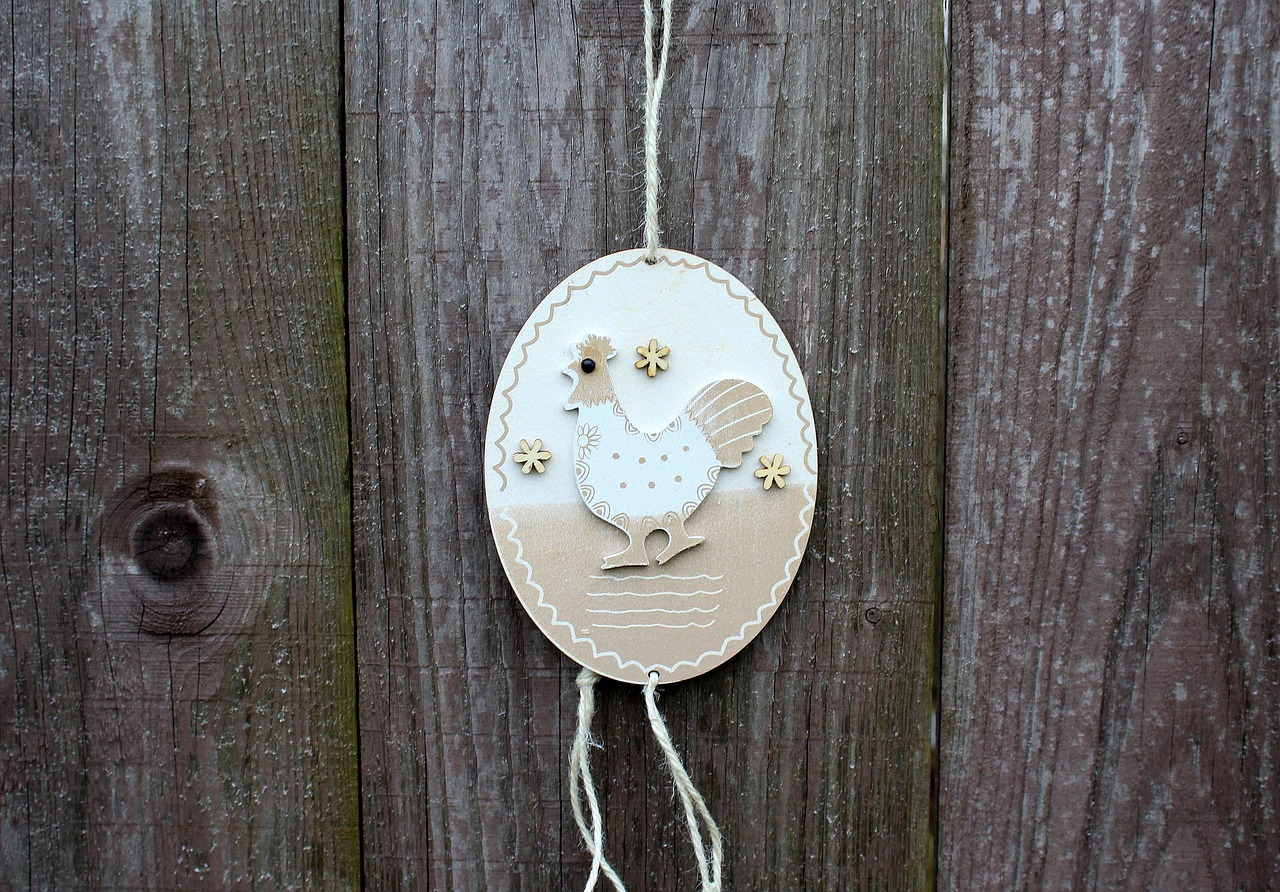
Frequently Asked Questions
- What is the significance of religious pendants?
Religious pendants often symbolize faith, protection, and a connection to one’s beliefs. They serve as reminders of spiritual commitments and can be worn to express devotion.
- How do I choose the right pendant for my spiritual journey?
Selecting a pendant is a personal experience. Consider what resonates with you emotionally, spiritually, and aesthetically. Reflect on the meanings behind different symbols and choose one that aligns with your intentions.
- Can pendants have healing properties?
Yes! Many believe that specific materials, like crystals, can harness healing energies. For instance, chakra pendants are thought to balance energy centers in the body, promoting overall well-being.
- How should I care for my pendant?
Proper care is essential to maintain the beauty and significance of your pendant. Clean it regularly with a soft cloth, avoid harsh chemicals, and store it in a safe place to prevent damage.
- Are there specific pendants for different religions?
Absolutely! Each religion has unique symbols represented in pendants. For example, Christians may wear crosses, while Muslims might choose crescent moons or calligraphy, each carrying its own meaning.

